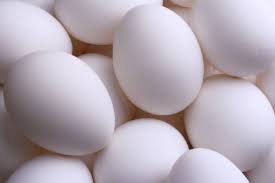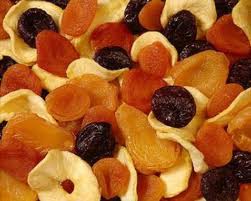The talmudic paradigm for a concept that is blatantly obvious is Keveiasa Bechuscha, the issue is as clear as the permissibility of mixing eggs into dairy products. However, things are not always as simple as they may seem, and just as the Ba’alei HoTosfos in Maseches Eiruvin discuss how less than “obvious” this concept may be, the production and use of eggs in modern food production pose questions whose answers are far from being considered obvious. The purpose of this article is to discuss some of the issues that confront modern kashrus supervision as they relate to egg production.

Industrial Eggs: Not As Simple As it May Seem

Enzymes
Published Spring 2013
Centuries ago, the ancient Greeks recognized that there were certain properties in leaven which caused chemical changes in flour and water converting it into bread. They called the magical ingredient “enzyme” which is the Greek term for “in leaven.” Today enzyme remains the term by which we refer to these biological catalysts. We now understand that enzymes are proteins found in every living organism be it animal, vegetable, or microbial.

Dried Fruit: Nature’s Way of Wrinkling Gracefully
It has been called nature’s candy. It’s a sweet source of nutrition whose popularity is on the rise. Commensurate with its growing popularity is its demand. In today’s global economy the dried fruit trade literally spans the entire globe. Apples from China, prunes from Bulgaria, figs from the Middle East, dates from Tunisia, or raisins from South America, and of course apples, peaches, plums, raisins, figs, and dates in the good old USA. Naturally, this growth presents a whole new set of challenges to kashrus agencies. How do you send a mashgiach to supervise date productions in Pakistan, raisin productions in Iran, or plum productions in Bulgaria?

Candy is Dandy
Kashrus Kurrents, Winter 1997
Walking through a candy store leaves one with little doubt that great creative genius has been a long time associate of the candy industry. It is an absolutely amazing act of wizardry to see the multitude of confectionery varieties, shapes, textures, and tastes that can emerge from sugar, chocolate, and corn syrup. Chewy caramels, cotton candy, lollipops, chocolate pralines, nut logs with creamy nougat fillings, the list is endless.
So what could be wrong with candy? Especially if the ingredient panel states only simple, natural ingredients? Not so simple.
At times a product may have nothing that presents a Kashrus problem, but at other times the seemingly identical product can be very problematic.
Let’s take a behind the scenes tour of Kosher candy manufacturing, where we can examine the production processes and procedures of some of the popular delicious confections enabling us to pinpoint the Kashrus […]

A 30 Year Retrospective on Kashrus Kurrents
Published Summer 2008
Approximately thirty years ago shortly before “Pesach” 5738 Mr. A. J. Levin, a vice president of the Orthodox Jewish Council, began publishing Kashrus Kurrents. In that first issue, printed on the familiar yellow paper with the blue Kashrus Kurrents logo, it was deemed necessary to advise the Baltimore community that they cannot rely on labels or advertisements that merely states ‘Kosher for Passover’. From that same issue we learned that the fledgling Star-K organization had just inaugurated its kosher hot-line whereby one could get accurate kashrus information Monday through Thursday between the hours of 10 a.m. to 12 p.m.

The Importance of Accurate Kashrus Information
As Bnai Torah we tend to consider ourselves sophisticated and knowledgeable regarding matters that we deem important. We are not easily swayed by glitzy advertising, nor are we apt to blindly follow recommendations from others unless we are convinced that the proffered advice is sound and based on actual knowledge. When making a major purchase such as an automobile, or deciding which yeshiva or seminary is the right choice for our son or daughter, we make a decision after deliberate and careful investigation of the facts. Of course, we do accept the opinion of others, but only after we are convinced that the one dispensing advice has factual knowledge of the issue at hand.

Kosher Chickens: From Coop to Soup
Published Spring 2007
There is a strange but true phenomenon that has resulted in our society’s technologically
motivated, highly competitive marketplace. If a manufacturer or producer desires to remain viable and competitive, he never loses sight of the fact that successful business demands innovation, creativity and growth. Status quo in the manufacturer’s lexicon often means stagnation, and no company wants to stagnate. In turn, the manufacturer on the move continues to innovate in an environment that encourages survival of the fittest. This presents additional challenges for products requiring kosher supervision from a kashrus agency. These axioms are very keenly felt in the production of kosher poultry, where halachic ingenuity and technological advances converge. The average kosher consumer rarely, if ever, has the opportunity to see a large or small slaughterhouse in action. Therefore, Kashrus Kurrents offers its readers an inside look at the policies and procedures of […]

Star-K Side Bar Summer 2007
Other News From The STAR-K
STAR-K Kashrus Training Program!

Hotel Kashrus on the Front Lines
Rabbi Mayer Kurcfeld, Star-K Kashrus Administrator
Published Summer 2007
Introduction
The world of hotel kashrus is exciting, stressful and always a challenge. Effective hotel
kashrus demands a keen understanding of modern equipment and complex facility
dynamics, along with an excellent mastery of the hotel food and beverage industry. These
criteria are essential in facilitating the role of the administrator and mashgiach as respected members and powerful presence in the hotel kitchen. The role of the mashgiach, once typecast as that of an old man with a white beard sitting on a chair, has changed. Not only does the mashgiach need to know that dairy and meat must be kept separate, the “new-age” mashgiach must relate to the kitchen and serving staff with diplomacy and grace.

Planning Your Simcha; The Agony or Ecstasy
Published Summer 2007
The joy, the planning, the anticipation, the expense — there is a lot that goes into a Yiddishe simcha. Be it a chasuna, Bar Mitzvah, or bris, every significant life cycle event is extra special and the baalei simcha want to ensure that their guests have a good time. Central to that goal is a delicious seudas mitzvah. Endless hours of planning are spent making sure everything is perfect, from the decor to the menu. Is the same effort expended regarding the kashrus level of the event? If the simcha is being catered, does the caterer have reliable kosher certification? As catering costs have risen, consumers have opted to cater their own simchas. This article will attempt to address some key issues that one should consider when catering an event.

Kashrus seminar-2007
With the expulsion of Jews from Spain in 1492, Poland became the recognized haven for exiles from Western Europe and the cultural/spiritual center of the Jewish people. Prior to the outbreak of World War II, it housed the second largest Jewish community in the world, with nearly 3.5 million Jews. All that changed rapidly following Nazi Germany’s invasion in 1939. A scant 11 percent (369,000) of the Polish Jewish population escaped the death camps. Many fled their native Poland in reaction to anti-Semitic violence or repression under Communism. Those who stayed often turned their backs on Yiddishkeit. Now, Polish Jews are feeling a new sense of tolerance and security in their post-Cold War democracy. An increasing number are returning to their Jewish roots, which in many cases have been discovered only recently.
Rabbi Mati Kos is the first known religious person in his family in the past […]

Shmitta 5768
Published Fall 2007
Dates of Kedushas Shviis, sfichim, and biur can be found in our 2008 Pesach Directory, click here.
For over nineteen hundred years, the Jewish people have longed to return to Eretz Yisroel, the land of Israel. It is only there that we can realize our full potential as a nation, and the Torah’s blueprint for life can be completely fulfilled. Throughout the millennia, the most important dimension of this yearning was to once again be able to fulfill the mitzvos hatluyos ba’aretz (agricultural laws), the commandments that can be observed only in the land of Israel. With Hashem’s help, many of us in this past generation have realized part of this two thousand year-old dream. Yet, this realization has presented us with new challenges.

The Safety of Our Kosher Food
Published Winter 2007
How many Kashrus Kurrents readers have heard this true Jewish fish tale? In the early 1900’s, when it was customary for Jewish housewives to make homemade gefilte fish, a very important food safety issue came to light. Diphyllobothrium latum, a fish tapeworm, was identified in the intestines of Jewish homemakers. It was measured at 30 feet and had a life span of up to 20 years. This largest parasite of humans attacked the digestive system of the cooks, who would periodically taste the raw concoction of ground freshwater fish to ensure the correct mix of salt and pepper. Although not fatal, gastrointestinal symptoms accompanied by increased weakness, shortness of breath, lethargy and fatigue were present for months, until the cause was finally discovered. In our day, the pernicious anemia that results may more likely be obtained from eating sushi or raw contaminated beef.

Star-K Side Bar Spring 2008
Other News From The STAR-K
STAR-K CERTIFICATION

It’s Kosher on Paper Only
Published Spring 2008
If you have ever left cookies in the oven a little too long, and they became stuck to the pan, you know what a frustrating experience it can be. Imagine multiplying that feeling hundreds or thousands of times, and you will begin to understand one of the major problems that commercial bakeries and food producers face all the time. To avoid this problem, food manufacturers use release agents to grease the pans. These agents are frequently found in a spray form, like PAM, and must always be kosher certified. Paper pan liners may also be used as release agents, particularly in bakeries. They provide more consistent browning and baking with no added fat or calories, and require less clean-up. Pan liners are also used by candy makers, and may be used as cupcake holders or wraps for frozen gefilte fish. Consumers are also discovering […]

McBiodiesel: New Not So Kosher Vistas for Spent French Fry Oil
Published Spring 2008
In an energy driven world with limited fuel resources, and a public that is totally enamored with its automobiles, industry is constantly looking for inexpensive new sources of alternative fuel. Biodiesel fuel is one answer. Biodiesel is a chemical process that separates vegetable oil or animal fats into two parts: methyl esters – which is another name for biodiesel, and glycerin. The biodiesel is then blended with alcohol to make biodiesel blends that can be used as a substitute for diesel fuel or other fuel substitutes.

Meat and Dairy-A Kosher Consumer’s Handbook
Published Spring 2008
One of the best known halachos of kashrus is that one may not eat meat and milk together. One of the reasons that kosher symbols incorporate a ‘D’ onto the kosher certification is to notify the consumer that the product may not be eaten together with meat, or within six hours after eating meat. Similarly, products containing meat as an ingredient will state “meat” next to the Star-K or other kosher symbol.

Star-K Side Bar Summer 2008
Other News From The STAR-K
STAR-K CERTIFICATION
Announces Monthly TeleKosher Conference Program for Local Kashrus Agencies

Rice: Natures Answer to Hashems Blessings
Published Summer 2008
It has been touted as nature’s most versatile food. There is no grain that feeds more people worldwide, and can boast that it is free of gluten and allergens. When the Gemara in Brachos discusses the blessings that are made before and after eating this grain, the mnemonic used to remember the Gemara’s conclusion is Amen,אמן : “נפשות ” , “מזונות ”, “אורז ” – “Orez”, “Mezonos”, “Nefashos”. If you haven’t guessed by now, the grain we are discussing is Oryza Sativa, otherwise known in Talmudic terms as 1 “Orez“, “אורז ”. We know it simply as rice.

Beware: Glatt May Not Always Mean Kosher
Published Summer 2008
It is written in our Torah, “Ubosor basodeh treifa lo socheilu” (Shmos 22:30), it is forbidden to eat treif meat. While the expression “treif” has become the universal connotation for food that is not kosher, in truth, the word treif specifically refers to an animal whose flesh was torn or ripped. Technically speaking, if a kosher species of animal or fowl was attacked by a predator, the meat of the victim may be deemed treif, non-kosher. However, the meat of an animal improperly kosher slaughtered is not treifa, it is called a neveila. Technically, meat of a non-kosher animal species is the meat of a temeiah. Yet, the term “treif” has found its way through the portals of the slaughterhouse, as well as the aisles of the non-kosher meat section of the supermarkets. No matter what the name, all of these categories of meat […]

Creating a Round Cake Decorated as a Sun | Doing Dental Work on a Parent
Kashrus Kurrents Summer 2008
Inaugural Issue: Shailos From The Institute Of Halacha
Kashrus Kurrents is proud to launch a new column, “Insights from the Institute”. In this regular feature, Rabbi Mordechai Frankel will share with our readership intriguing shailos from his email inbox. The following is a sampling of the types of interesting questions that will be addressed in future columns.

STAR-K Launches the Institute of Halacha
Summer 2008
The Mishnah teaches us, “appoint for yourself a rav,” a Torah guide from whom you can acquire clarity through wisdom. But, what happens when you do not have a personal rav, or you live in a large Jewish community but your Rav is unavailable and time is of the essence for your halachic query?
STAR-K realizes that there is no substitute for a person’s own rav. In an effort to offer a possible solution, it has launched its Institute of Halacha as a public service. Over the years, the agency’s Kashrus Hotline has answered generic halachic questions from kosher consumers the world over, including inquiries regarding the kosher status of foods and certified Sabbath mode appliances. The formation of a separate official division within STAR-K testifies to the need for addressing these issues.
The Institute of Halacha is directed by HaRav Mordechai Frankel, under the guidance of HaRav Moshe Heinemann, STAR-K’s […]

Star-K Side Bar Fall 2008
Other News From The STAR-K
STAR-K CERTIFICATION
TeleKosher Conference Program for Local Kashrus Agencies

STAR-K’s 5th Annual Kashrus Training Program
Published Fall 2008
What do Plano, Texas; Thornhill, Ontario; and Olney, Maryland have in common? They are just some of the hometowns of STAR-K’s fifth annual Kashrus Training Seminar participants.

Does Bishul Akum Apply to Foods Cooked in a Microwave | Does a Bike Shed Need a Mezuzah
Kashrus Kurrents Fall 2008
Q: Does bishul akum apply to food cooked in a microwave?

Profiles of Courage and Inspiration
Published Fall 2008
Part I – A Trip to the Otzer Bais Din
Dateline: Erev Shabbos Kodesh, Parshas Balak, 8 Tammuz
Place: Geula, Yerushalayim

Charting the Course of Shmitta
Published Fall 2008
The mitzvah of shmitta poses many challenges for those who live in Eretz Yisrael. The main challenge, of course, is for the farmers. However, the consumer has his challenges, as well. It is always preferable to purchase produce from stores that have reliable kosher certification to ensure that there are no halachic problems. If there is no such store available, one must be certain not to transgress the laws of shmitta in the purchase, consumption, or interaction with shmitta produce. These are the different categories of halachos that one has to take into consideration:

Star-K Side Bar Winter 2008
Other News From The STAR-K
Star-K Kashrus Training Program

Heating & Cooling – Using Ice from an Ice Maker on Shabbos | Using an Electric Hot Water Heater on Yom Tov
Kashrus Kurrents Winter 2008
Q: My freezer has an ice making machine, which has an arm that rises as ice is produced and lowers when ice is removed. I generally turn the machine off before Shabbos by lifting the arm until it is fully raised. If I forget to do this, can I remove ice on Shabbos from the ice maker?
A: There are various types of ice maker machines available, and they do not all work in the same way. However, many of the commonly available models employ the following mechanism. The ice making process begins when the ice maker signals the water valve to open, and a specified amount of […]

Birchas Hachama 5769
Published Winter 2008
To hear a comprehensive shiur on Birchas Hachama, click here.
Listen to a teleconference interview about Birchas Hachama, click here.
To see Sefer Shaarai Zmannim referenced in this article, click here.

 STAR-D
STAR-D STAR-S
STAR-S